Dr Jackson Lau OD, FSLS, FAAO works at one of America’s biggest myopia management clinics and is an advocate for ortho-k. In this piece, he shares a case study of a young astigmatic patient whose sight was transformed with Euclid MAX™ Toric lenses and the Medmont Meridia™.
Ortho-k offers many lifestyle advantages which effectively increases compliance and therefore efficacy.
An overnight lens, ortho-k is an excellent choice for children as it gently reshapes the cornea while they sleep so during the day they have clear vision without glasses or contacts. This not only provides convenience but also has been shown to slow the progression of myopia. The benefits are pretty incredible. Most importantly, myopia is managed to help protect a child’s long-term eye health.
A few years ago, a 13-year-old presented to my clinic for a myopia consultation. Her parents were concerned about her rapidly progressing myopia, long term eye health, as well as the need for thicker glasses impacting her active social life. After discussing the various myopia management options, the family decided to pursue orthokeratology due to its additional lifestyle benefits.
Her glasses prescription was measured at -3.75D in the right eye and -2.00-0.50×160 in the left eye. Baseline corneal topography maps were captured using the Medmont Meridia Pro, revealing moderate limbus-to-limbus corneal astigmatism (Figure 1). Though the patient had small, tight lid apertures, her doctor was able to capture as much real data as possible using this unique small-cone device.
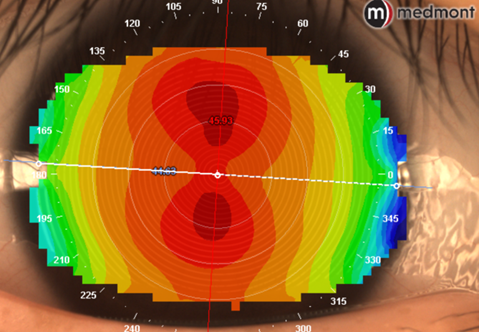
To confirm the peripheral corneal shape, elevation data was measured at an 8mm chord length to determine the sagittal height differential. At roughly 25-30 microns of peripheral corneal elevation difference between the primary meridians, Euclid MAX™ Toric lenses were designed for both eyes. These lenses were made with toric peripheries to closely match the limbus-to-limbus corneal astigmatism.
The Medmont Meridia maps were crucial in both demonstrating to the parents their daughter’s complex corneal shape, as well as in designing precisely fit lenses using her real data. Euclid designs and Medmont topography can typically yield an 87-95%* first-fit success rate. This case highlights the immense feature-set of the Meridia Pro in helping the doctor troubleshoot an extremely complicated fit:
- Horizontal visible iris diameter (HVID) measurements precisely determined the proper overall lens diameter (Figure 2).
- Difference, or subtractive maps, revealed double-ring patterns suggestive of tight-fitting lenses (Figure 3).
- Anterior segment fluorescein imaging with built-in cobalt blue allowed the doctor to capture photos and videos of the lens fitting relationship to communicate efficiently with lens consultants (Figure 4).
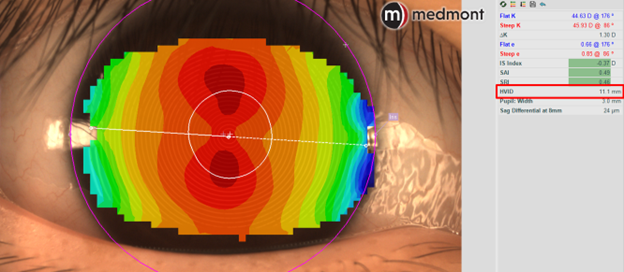

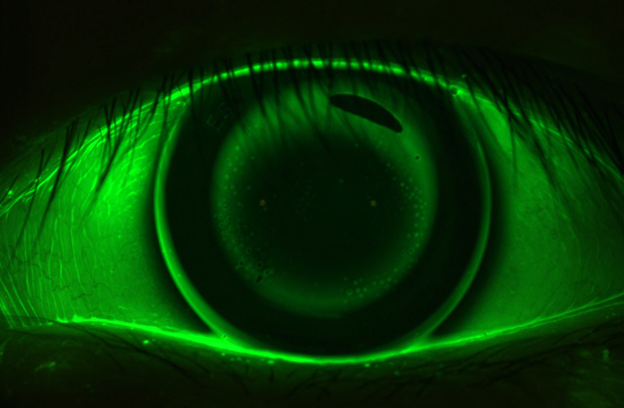
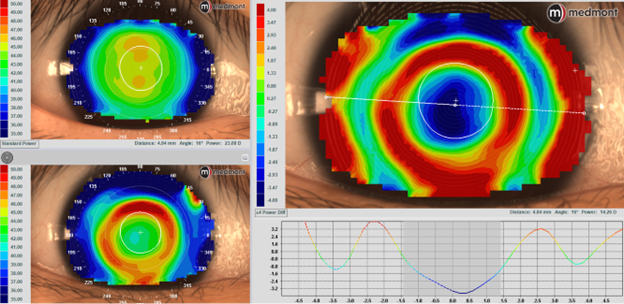
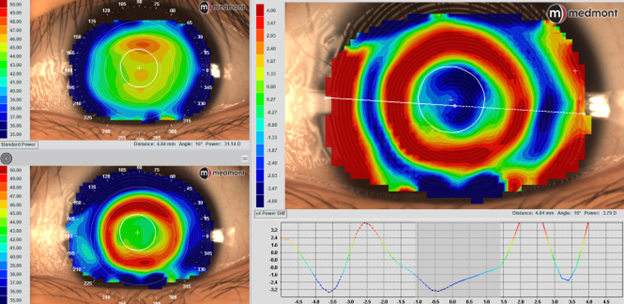
*2019 Euclid Internal Data, Hong-Kong Studies: Tan 2019, Orthokeratology, Guo 2021, Orthokeratology
